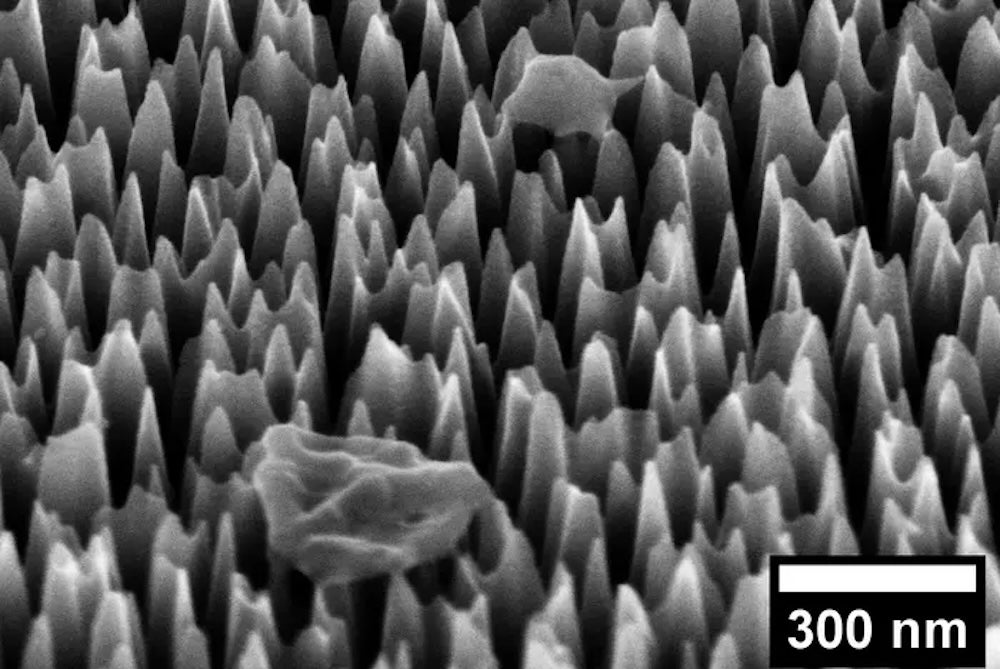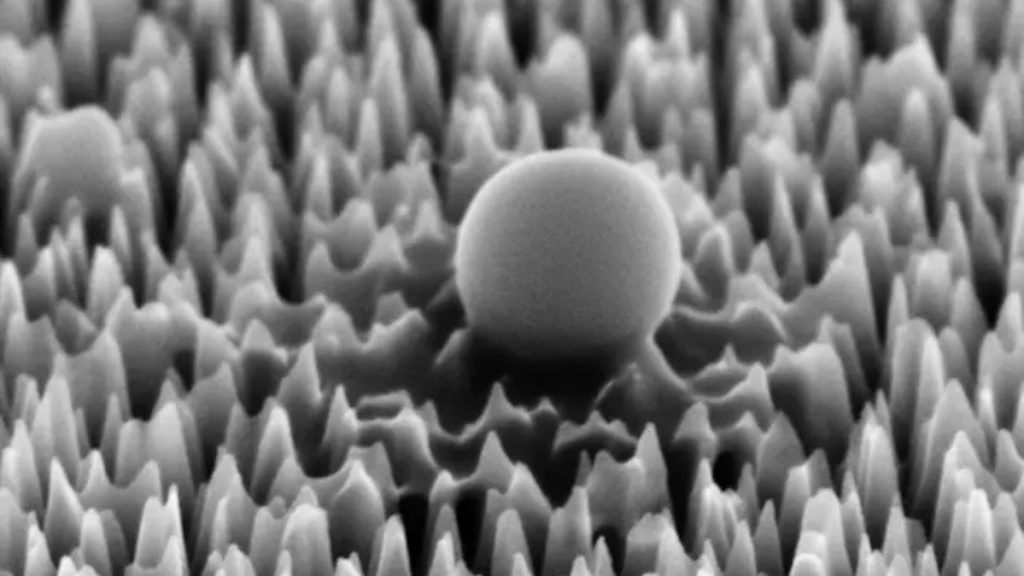Scientists at Australia’s Royal Melbourne Institute of Technology (RMIT) have used force and advanced manufacturing to produce a new silicon material for hospitals and labs. Despite appearing as a flat, black mirror to humans, the thin layer actually acts as a deadly trap for pathogens. pathogens.
As recently explained in the journal ACS Nano, the interdisciplinary team spent over two years creating the innovative material, which feels smooth to humans but is covered in minuscule “nanospikes” at a microscopic level. In laboratory tests, 96 percent of hPIV-3 virus cells that encountered the tiny needles on the material were severely damaged or torn apart, preventing them from causing infections like pneumonia and bronchitis. This destruction was achieved within six hours without any external help.

Interestingly, the inspiration for the spiky silicon came from insects such as cicadas and dragonflies, whose wings have sharp nanostructures capable of piercing fungal spores and bacterial cells. The researchers noted that viruses are even smaller than bacteria, so the spikes needed to be smaller to be effective.
[Related: An old antibiotic could become a new weapon against drug-resistant infections.]
To create the virus-destroying surface, the designers used specialized equipment at the Melbourne Center for Nanofabrication to subject a silicon wafer to ionic bombardment. This process engraved countless 2-nanometer-thick, 290-nanometer-tall spires on specific areas of the wafer. Each spike is about 30,000 times thinner than a human hair.
The researchers believe that their silicon material could be used on frequently touched surfaces in places with high levels of pathogens.
“Implementing this advanced technology in high-risk environments like labs or healthcare facilities could significantly improve measures to contain infectious diseases,” said Samson Mah, the study's lead author, on Wednesday. “Our goal is to create safer environments for researchers, healthcare workers, and patients.”
By using the material’s simple mechanical methods to effectively clean spaces (i.e., piercing virus cells like shish kabobs), the designers also believe that overall chemical disinfectant usage could decrease—a major concern as society grapples with the continued increase of increasingly resistant “superbugs.”









